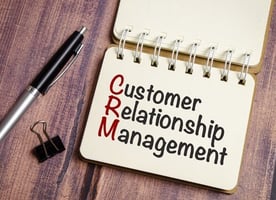There is a common experience of people who have been working with CRMs for a long time: the problem...
Clean Up Your Data: A Guide to CRM Deduplication
A modern CRM system serves as the central nervous system for managing interactions and data related to your most valuable asset: your customers. However, this vital tool can quickly become cluttered and inefficient when plagued by a common ailment: duplicate data. These redundant entries, often arising from various sources and human errors, can severely undermine the effectiveness of your CRM. This article will delve into why duplicate data proliferates within CRMs and provide a comprehensive guide on how to effectively deduplicate your system, ensuring a cleaner, more reliable, and ultimately more profitable customer database.
The Causes and Impact of Duplicate Data
Duplicate data in your CRM isn't just a minor annoyance; it's a significant drain on resources and a potential source of costly mistakes. Understanding how these redundancies creep into your system is the first step towards eradication. One common culprit is manual data entry errors, where users might enter a new contact or company without first verifying if an existing record already exists. Furthermore, CRM automations, while designed to streamline processes, can inadvertently create duplicate records based on incoming conversations or triggers if not configured meticulously.
The combination of multiple data sources, such as website forms or connected mailbox automatically creating contacts, imported lists, and third-party integrations, also contributes significantly to duplication, especially if data mapping isn't precise. Inconsistent data entry practices across different teams or individuals, where the same information might be recorded in slightly different formats, further exacerbates the problem. Finally, a lack of robust validation rules during data input allows inconsistencies and duplicates to slip through the cracks.
The ramifications of this duplicated information are far-reaching. Inefficient marketing efforts become commonplace as teams spend extra time refining email campaign lists, risk sending the same emails multiple times to the same contact, or, conversely, miss individuals buried within duplicate entries. An erroneous view of your customer base emerges, leading to inaccurate statistics and flawed segmentation strategies. Crucially, scattered information in customer history, with different interactions and details residing in various "versions" of the same contact, severely hinders the sales process and leads to poor customer support. Beyond these direct impacts, increased operational costs accumulate due to the greater storage requirements and the time-consuming manual cleanup efforts often required to address the issue.
Understanding Deduplication: The Solution
Deduplication is the systematic process of identifying and then either merging or deleting duplicate records within a database. In the context of your CRM, the primary goal of deduplication is to establish a single, accurate, and unified view of each contact, account, or any other relevant entity. This "single source of truth" empowers your teams with reliable information, fostering more effective interactions and strategic decision-making.
There are generally two main approaches to deduplication: manual and automated. Manual deduplication involves human review and identification of duplicate records, often best suited for smaller datasets or complex cases requiring nuanced judgment. Automated deduplication tools, on the other hand, leverage algorithms and predefined rules to identify and merge or flag potential duplicates, offering efficiency for larger databases. Regardless of the method, adopting a proactive and ongoing deduplication strategy is paramount to maintaining data integrity and preventing future redundancies.
The Deduplication Process: A Step-by-Step Guide
Implementing an effective deduplication process involves a structured approach:
Step 1: Data Audit and Assessment
Begin by thoroughly analyzing the current state of your CRM data. Identify the specific fields most prone to duplication, such as name, email address, phone number, and company name. Quantify the problem by attempting to determine the extent of the duplicate data. This initial assessment will provide a clear understanding of the scope of the cleanup required.
Step 2: Define Deduplication Rules and Criteria
Establish clear rules for identifying duplicates. This might involve exact matches on specific fields, fuzzy matching to account for slight variations in spelling or formatting, or specific field combinations that, when identical or similar, indicate a duplicate. Consider the sensitivity levels of your matching algorithms to balance accuracy and efficiency. Crucially, decide on a "master record" strategy, outlining which record's information will take precedence during a merge, especially when discrepancies exist between duplicates.
Step 3: Choose Your Deduplication Method
Decide whether manual deduplication or automated deduplication tools (or a combination of both) best suits your needs. Manual deduplication is often preferred for smaller datasets or intricate cases where human oversight is essential to avoid accidental data loss. Explain the process of manually comparing records and merging relevant information. Automated deduplication tools, often available as built-in CRM features or third-party solutions, offer significant advantages for larger databases. Highlight features such as fuzzy matching algorithms, the ability to define rule-based automation, and the efficiency of bulk merging capabilities.
Step 4: Execute the Deduplication Process
Once your rules and methods are defined, proceed with the deduplication. Explain the specific steps involved in merging (combining information from duplicate records into a single, comprehensive entry) or deleting (removing redundant records) based on your chosen approach. Emphasize the critical importance of backing up your entire CRM data before initiating any major deduplication effort to safeguard against potential data loss.
Step 5: Data Cleansing and Standardization
Beyond simply removing duplicates, focus on standardizing data formats. Ensure consistency in fields like phone numbers, addresses, and date formats. Consider data enrichment services to fill in missing information or correct inaccuracies in your existing records, further enhancing the quality of your CRM data.
Maintaining Data Integrity: Prevention is Key
Preventing duplicate data in your CRM is more sustainable than just cleaning it up. This requires a blend of smart CRM configurations, automated tools, clear processes, and an informed, accountable team.
CRM Configurations for Uniqueness
It is strongly recommended to configure your CRM to "enforce unique values" on key fields like email, mobile phone or company VAT ID , to prevent users from creating new records with existing unique identifiers.
Although it is an easy configuration from a technical point of view, this is not a simple thing as there are many things to consider:
- will those key fields be "required info" to create a new record?
- is this info available and accurate at the moment of new record creation?
- would it require an extra step to get this info and enter it into the system at the time of new record creation?
Monitoring duplicates
It is critical to identify duplicates and correct them early, before getting too many. This is much easier and it is the only way to maintain data quality at all time:
- It is usually much easier to identify and correct a few duplicates once a while rather than correcting too many later.
- In case of duplicates due to a configuration error or an inefficient process, early identification is the only way to correct the source of the problem on time.
- Regular deduplication is necessary to keep the data quality on a standard level.
You can use your CRM's built-in features or integrate to third party tools to report regularly on duplicates. Depending on your platform and the tools you have, this can be a semi automatic or even fully automatic process. What ever you CRM platform is, there are ways of perfoming those regular checks, many options for all budgets and companies sizes.
Employee Training and Accountability
Make sure that all users understand the impact of duplicates, proper data entry, and CRM features for prevention. Foster "accountability" by defining roles, communicating data quality importance, and establishing reporting protocols. A well-informed and responsible team is crucial for preventing duplicates at the source, complementing technical safeguards. Prioritizing prevention creates a more efficient and reliable CRM in the long run.
Conclusion
A clean and accurate CRM database is the bedrock of effective customer relationship management. By actively addressing the issue of duplicate data through a well-defined deduplication process and implementing preventative measures, you empower your teams with reliable information, optimize your marketing and sales efforts, and ultimately deliver superior customer experiences.
It may seem a bit difficult or too technical to fight against such data quality issues, but this is impacting all the organisation and mainly customer facing functions. Take the necessary steps today to clean up your duplicates and unlock the true potential of your CRM



